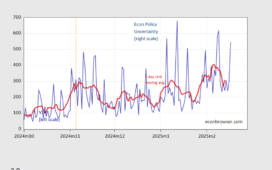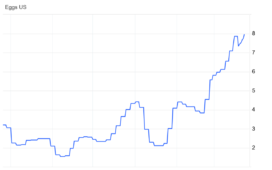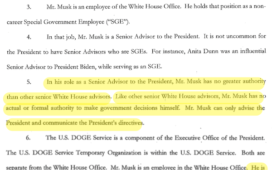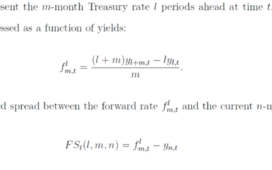Forgive me for trying to dig into a story, of the exchange of strikes by Israel and Hezbollah a few days ago. Like far too many conflict-related accounts, the initial accounts depicted the attacks as a major escalation, possibly presaging a wider war, then dialed that back, way back, to the degree that one wonders if at least some press outlets were trying to memory hole the events. Confirming this perhaps unduly cynical view was that the Financial Times did not mention these attacks on the landing page of the Financial Times mere hours after they occurred. By contrast, the Wall Street Journal did make it their leading piece, with the title Israel, Hezbollah Signal De-Escalation After Predawn Bombardments. We’ll discuss it
Recall that Israel and its allies, the US, France, and the UK, have been waiting to see what if anything Iran and Hezbollah will do in the way of retaliation after Israel killed senior Hezbollah military official Fuad Shukr in Beirut and the lead negotiator from the Hamas side in the not-going-anywhere Gaza ceasefire talks, Ismail Haniyeh, in Tehran when he was a guest attending the inauguration of incoming president Masoud Pezeshkian. The assassination of Haniyeh is particularly significant since he was from the political, not military, wing and was widely depicted as one of the most moderate voices in Hamas. He has been replaced in the negotiations by military leader Yaha Sinwar.
With Iran, the Anglosphere press has been faithfully repeating the spin that stern words have cowed Iran into inaction. But a sharp letter from some EU states along those lines elicited a tart response:
Iran has sharply criticized a joint letter from France, Germany and the UK that urged it to show restraint and not retaliate for the assassination of a Hamas leader in Tehran.
Iran said the letter ignored Israeli “crimes and terrorism.” https://t.co/JGvh7YmCDq
— DW News (@dwnews) August 13, 2024
Iranian commentators like Professor Sayed Mirandi also stress that Iran most assuredly will retaliate, but at a time of its choosing.
Even though it is difficult to be sure what exactly happened in the mutual attacks on Sunday, the more complete-seeming accounts indicate that both Iran and Hezbollah intend to control the escalation and will not be provoked into rash moves. Their strategy has been and continues to be a war of attrition, wearing down not just Israeli and US capabilities, but Israel’s will. The Axis of Resistance has studied Israel over a very long period, and has taken stock of the fact that Israel and the US are set up to wage short, airpower heavy conflicts. Thus it should come as no surprise that even the Western media is chronicling how Israel has failed to make much of a dent in Hamas after nearly 11 months of engagement (see Simplicius for lots of detail).
The psychological toll is even greater since the premise of Israel was that it was a place where Jews could be safe. Larry Wilkerson in a recent interview with Nima emphasized that Israel and the US need to restore the image of Israel as the fiercest and most formidable force in the region, even though one wonders how that can be done. Slaughtering Palestinian women and children does not rate.
A remarkable confirmation of that view came in a op-ed in Haaretz last week, Israel Will Collapse Within a Year if the War of Attrition Against Hamas and Hezbollah Continues by former IDF General Yitzhak Brik. Key sections:
I assume that Defense Minister Gallant already understands that the war has lost its purpose. Israel is sinking deeper into the Gazan mud, losing more and more soldiers as they get killed or wounded, without any chance of achieving the war’s main goal: bringing down Hamas.
The country really is galloping towards the edge of an abyss. If the war of attrition against Hamas and Hezbollah continues, Israel will collapse within no more than a year.
Terror attacks are intensifying in the West Bank and inside the country, the reservist army is voting with its feet following recurring mobilizations of combat soldiers, and the economy is crashing. Israel has also become a pariah state, prompting economic boycotts and an embargo on arms shipments.
We are also losing our social resilience, as the growing hatred between different parts of the nation threatens to ignite and bring to its destruction from within.
Sinwar and Hezbollah leader Hassan Nasrallah understand Israel’s dire situation. What Israel could have achieved earlier with a hostage/cease-fire agreement has become impossible due to the new conditions that Netanyahu introduced into the proposed deal…In light of the new situation, a threat by Iran and Hezbollah to attack Israel in response to the killing of the two senior officials is materializing in the region. The use of assassinations is a step threatening to ignite the entire Middle East, decided upon by the three pyromaniacs, Netanyahu, Gallant and Chief of Staff Halevi, without thinking about the significance of their irresponsible decisions.
So Israelis have been waiting for what the Axis of Resistance will do. That anxiety is wearing. That’s confirmed in the Journal story we mentioned earlier, which holds back on the details on the strikes till the end. And even then they are a bit thin. From the Journal:
After a heavy exchange of fire early Sunday between Israel and Iran-backed Shiite militia Hezbollah, the regional military powers signaled a desire to avoid a spiral that could lead to a wider Mideast conflict.
Let’s stop here. That seems to be US de-escalatory messaging coloring the Journal’s account. See by contrast:
Hezbollah has fired hundreds of rockets into northern Israel, calling it the ‘first phase’ of its retaliation for the assassination of top commander Fuad Shukr, in Beirut in July. Earlier, Israel launched what it called ‘pre-emptive’ strikes on southern Lebanon. pic.twitter.com/4klEdqR9KD
— Al Jazeera English (@AJEnglish) August 25, 2024
Mind you, both Hezbollah and Iran do want to avoid a wider war, but continued retaliation, which Hezbollah has said is coming, risks that. The Journal argues that the two sides might settle back into tit for tat exchanges. From much later in the Journal account:
Sunday’s fighting got under way before dawn, when Israel’s military hit dozens of targets in Lebanon in what it called a pre-emptive strike. The U.S. and Israel had recently obtained intelligence that Hezbollah planned to attack early Sunday, U.S. officials said. Israel briefed the U.S. on its plans before going ahead….
Israel knocked out about two-thirds of the projectiles that Hezbollah planned to launch Sunday morning, a senior Israeli official said. Prime Minister Benjamin Netanyahu said all of the drones launched at a “strategic target in the center of the country” were intercepted.
One Israeli sailor was killed by shrapnel from an Israeli rocket interceptor that exploded over his boat, a military spokesman said. Hezbollah said two of its members were killed.
Nasrallah said the attack had two phases—a barrage of 340 rockets at northern Israel and a launch of attack drones farther into the country. Among the targets was the headquarters of Israel’s spy agency, Mossad, just north of Tel Aviv, Nasrallah and a person familiar with the matter said. Nasrallah said Hezbollah also targeted a Tel Aviv-area base of the Israeli military’s Unit 8200, which is responsible for signals intelligence and cyber.
One notices that Israel says that it shot down most but not all of Hezbollah rockets and drones, but the story is silent on whether the attack on the Mossad HQ and Unit 8200 outpost had any success. Note that much earlier, the Journal quoted Hezbollah leader Nasrallah:
“We said this was a preliminary response,” Hezbollah leader Hassan Nasrallah said in an address Sunday. “If we assess that the impact of the preliminary response was not satisfactory, we will act accordingly. For now we consider that the response is over, and the country can take a breath.”
One has to think whether Nasrallah deemed the attack to be satisfactory or not would depend on the harm done to the Mossad and Unit 8200 operations. The Times of Israel quote Nasrallah stating that the Glilot military base, which houses the 8200 intelligence group, was the main target
Hezbollah published footage supporting the idea that they did damage the Unit 8200 facility:
#Hezbollah :: published a much more detailed infographic with more understandable graphics of the Gillot base in the suburbs of #Tel_Aviv, the base where the main headquarters of the #Zionist intelligence command known as Amman is located and was targeted today 🔻🔻 pic.twitter.com/Z8Clv5WzPE
— ALI Yasser (@AaisackAli) August 26, 2024
Even though other targets were secondary, it appears Hezbollah inflicted additional damage (there was much ridicule on Twitter that Hezbollah torched a chicken coop but the fires went beyond that):
Lebanon targeted Israel’s north.
the north is burning 💥🔻🚨🔥
Hezbollah Tel Aviv
pic.twitter.com/NPwRNJ7Ep2— Volkan Albistan (@valbistan) August 26, 2024
The Times of Israel reported ‘We don’t count’: Northern leaders complain military only acts when Tel Aviv is targeted, noting that the mayors of three communities vowed to “cut off contact with the government”. I am not sure why that amounts to a threat.
The Journal is also curiously silent on what the Israel pre-emptive strikes amounted to. It gets credit for not dignifying claims like this:
Israel is not carpet bombing Lebanon. Israel launched a preemptive strike on Hezbollah’s precision-missile launch sites preparing to attack targets in Tel Aviv. Hundreds of fighter jets got to thousands of Hezbollah rockets first. Learn to tell the truth you primitive barbarian. https://t.co/rVElsgsaP3
— Daniel (@FortifyCulture) August 25, 2024
We’ll unpack soon what was wrong about this claim. A less excitable version of the Israel attack from the Financial Times:
Israel began its attack shortly before 5am local time, deploying 100 jets to bomb about 40 sites in Lebanon after identifying what it said were preparations by Hizbollah “to fire missiles and rockets”.
The presentation on Monday by Alastair Crooke on Judge Napolitano fills in some key gaps in these accounts. Starting at 3:10:
Whatever you’ve read is almost certainly wrong. It’s a narrative…..First of all, it all happened at around 4 o’clock in the morning on Sunday. The Israelis started to see people moving in Lebanon and moving towards platforms. Hezbollah was planning the operation to fire drones and rockets at 5:15 on Sunday morning. And Israel started to, an attack, a direct attack. It involved I think about a hundred aircraft.
But contrary to what the Israeli propagandists at the IDF are saying, and I know this not from Hezbollah but I know this from inside Lebanon, people who are on the ground there, it was chaotic twenty minutes. Israel just bombed various valleys where they imagined the ballistic missiles were. But they’d been cleared out of there some time ago. There were no ballistic missiles. You can check that, there are people on the ground who know what’s happened. There are no missiles. So when they said they destroyed thousands of missile launchers, this is a complete lie. Because first of all, there are no missiles, no ballistic missiles, no large missiles south of the Litani River. What you have is drones and small rockets. And none of these have launchers. And they destroyed none of them. It was just a show, a show of force and it only lasted about twenty minutes…..
[6:40] What we have seen is the war fragmenting in different ways. First of all, it fragmented with the killing of Fuad Shukr in Beirut just before Haniyeh was killed in Tehran. And for that reason, the actual operations of the Resistance changed. Because as far as Hezbollah was concerned, the killing of Fuad crossed all red lines, all the understandings, the careful balances were broken by that. And they opened a separate account, quite separate to what was happening in Gaza. And they opened a separate account.
And so what happened in this weekend was about settling that account with Israel. And it stuck very carefully to the equation, the war equations, that they had between Israel and Hezbollah. The didn’t go out of the equations. So if you like they attacked in Tel Aviv the Mossad headquarters and the headquarters of 8200, equivalent roughly to NSA in the US, if you like, it’s the communications intercept. Because that was the decision-making if you like structure that led Fuad Shukr’s killing in Beirut. And they did in Tel Aviv because they killed him in Beirut. There was a complete equivalence if you like in that.
And one phase was three hundred and twenty rockets. Of course, it’s been played down. I can’t tell you exactly how many were shot down or didn’t land properly. But they were targeted not on people or civilians, they were targeted on military bases and very precisely on air defense systems. You can see that.
And then immediately, 4 o’clock, the Israelis came in bombing, pretty randomly, in the areas where they thought Hezbollah would have their ballistic missiles but as I said there were none, they were north of the Litani [River]. They were sending a message to Hezbollah by not going beyond the Litani, that the equation with the war with Israel was still holding. And that’s an important point. The Israelis were signaling, “OK, you hit Tel Aviv for Shukr but we are not going to hit Beirut.”
Note that the “precision-guided” in the tweet we flagged earlier as dubious = ballistic missiles.
Crooke shortly thereafter report that the reason the Western press has no reports of damage in Israel was that the government put out a complete ban on that information, confirmed independently by the Palestine Chronicle.
Given the news blackout, it’s impossible to confirm claims like this, but they can’t be ruled out either:
The truth is out, Hassan Nasrallah’s hit has been confirmed, Commander of Israeli 8200 intelligence unit, the most sophisticated intelligence unit on earth is dead! #HIZBULLAH #Hezbollah pic.twitter.com/PwSUFHRLrk
— জয় বাংলা 1.0 (@LOC_bbk) August 27, 2024
And Nasrallah seems exceptionally pleased with himself.
Nasrallah couldn’t hide his satisfaction at Israel’s failure to thwart Hezbollah’s attack. He almost laughed:
“This is no longer the weak Lebanon you could invade with a marching band. Now, it might happen that we invade you with a musical band!”
— taseenb (@taseenb) August 26, 2024
If the IDF actually thought there were ballistic missiles in those valleys south of the Litani, that also points to a pretty big Israel intelligence failure.
Needless to say, this somewhat long-winded account illustrates what an informational hall of mirrors we live in, and why it’s hard to take any reports from Team US at face value.













